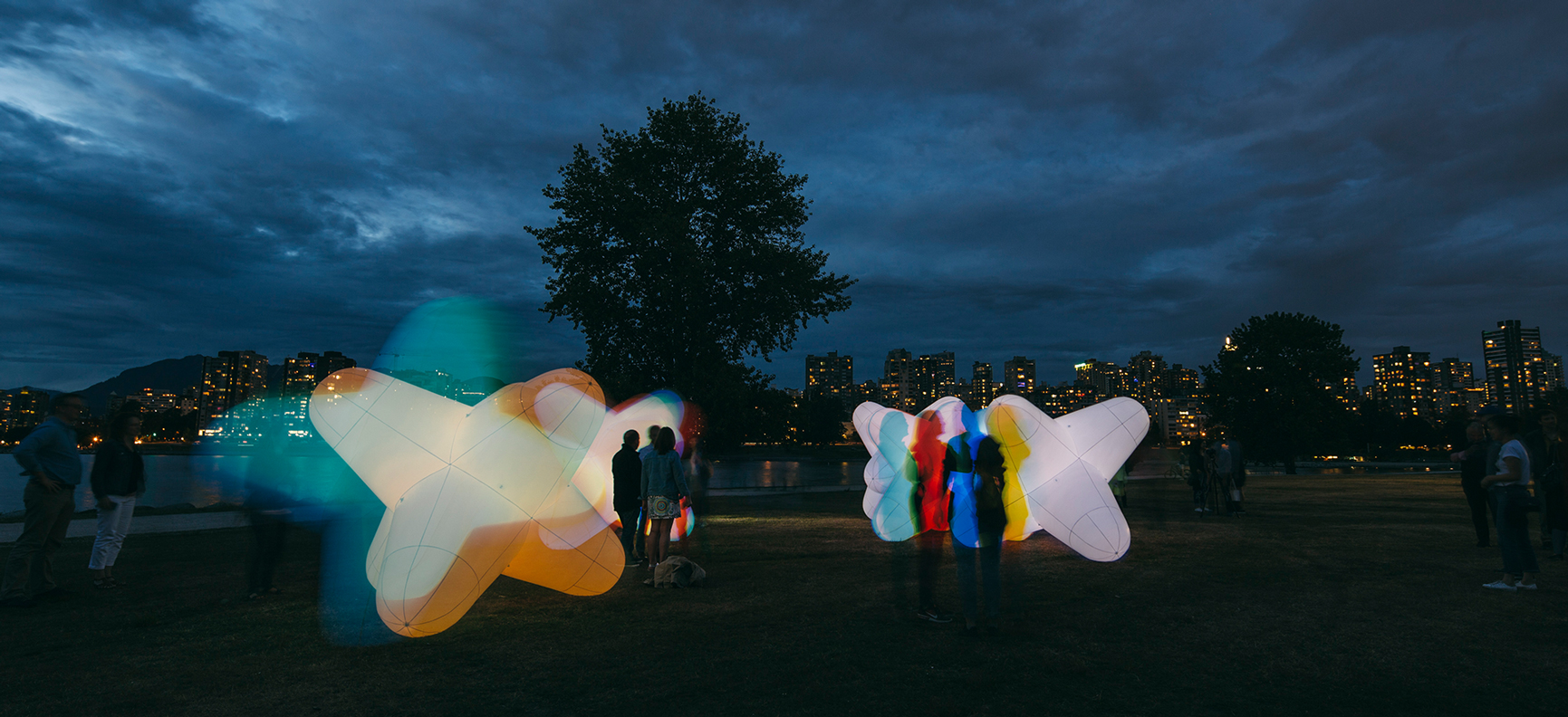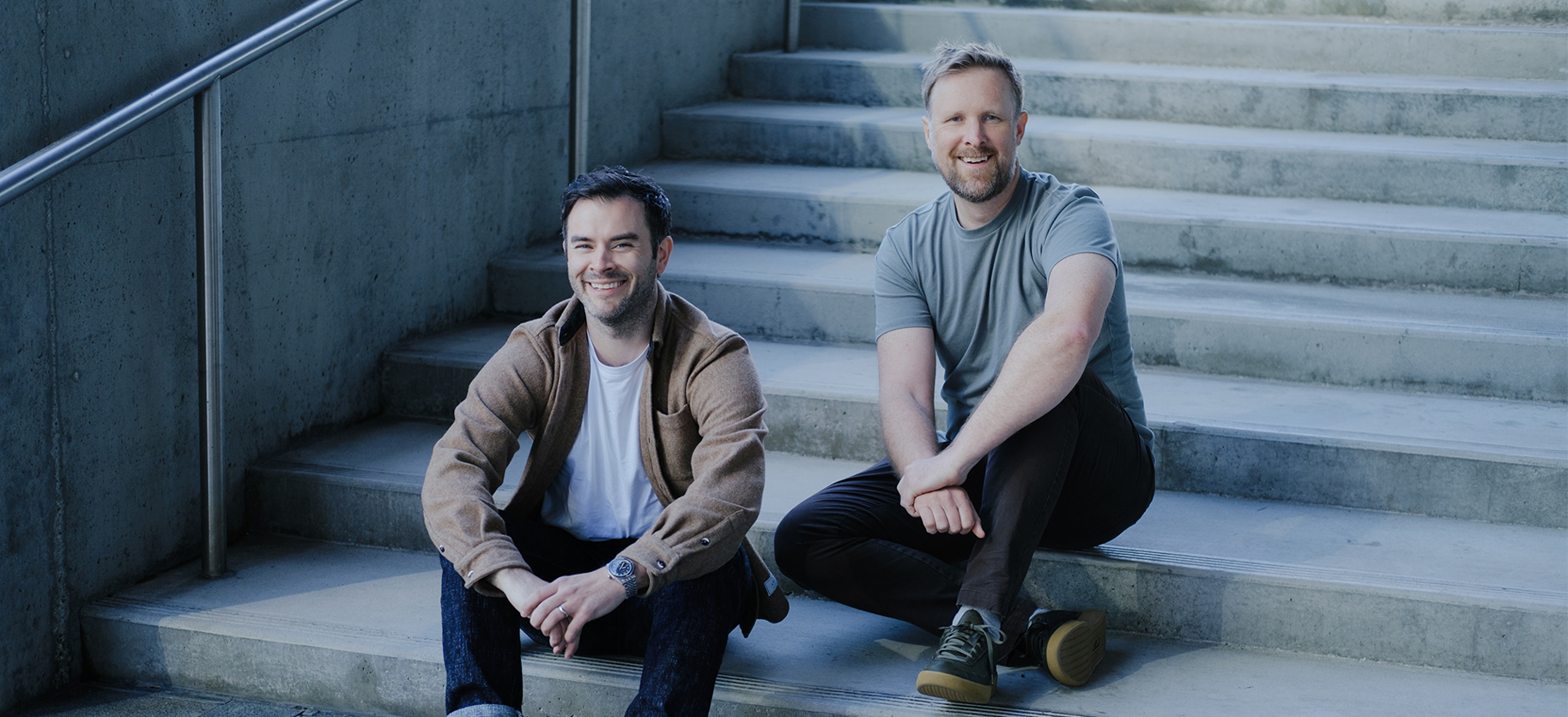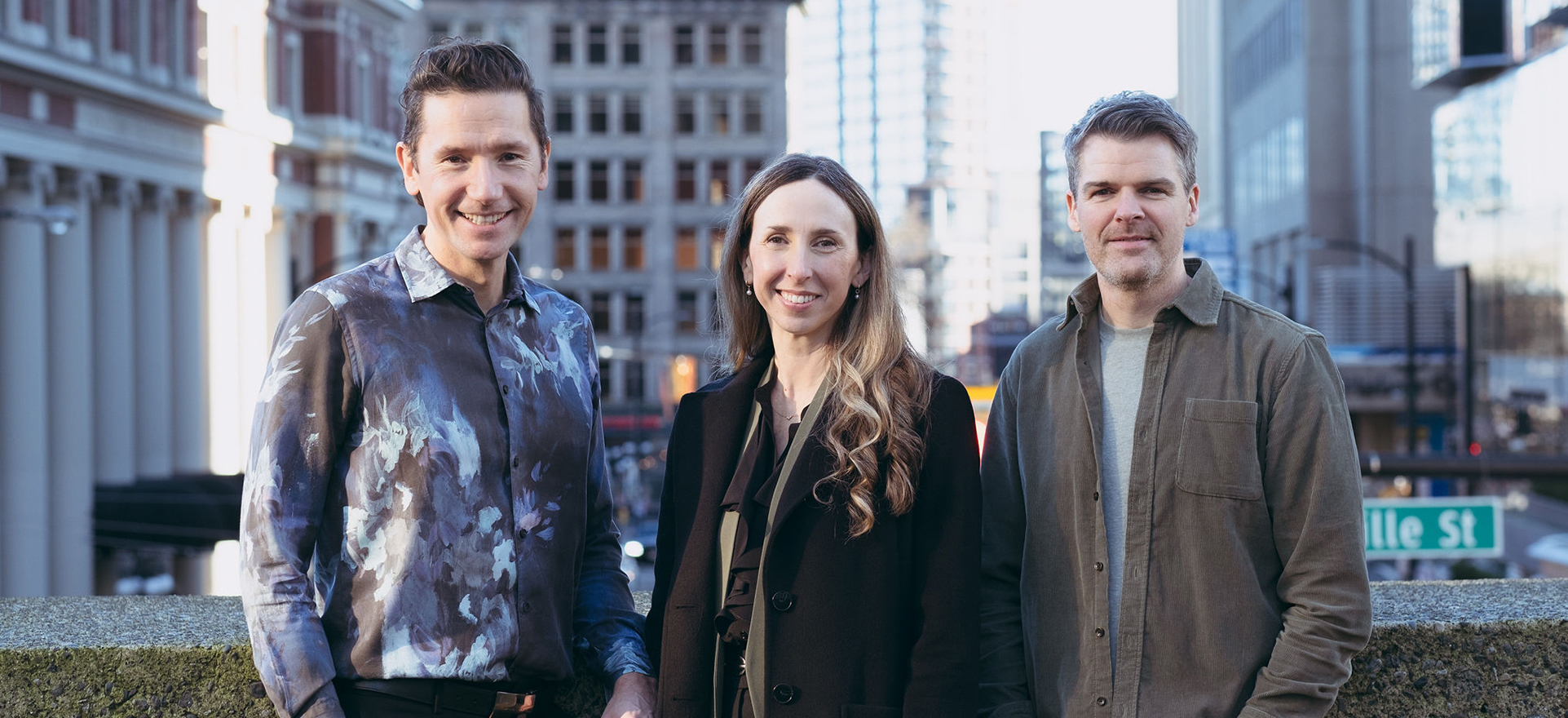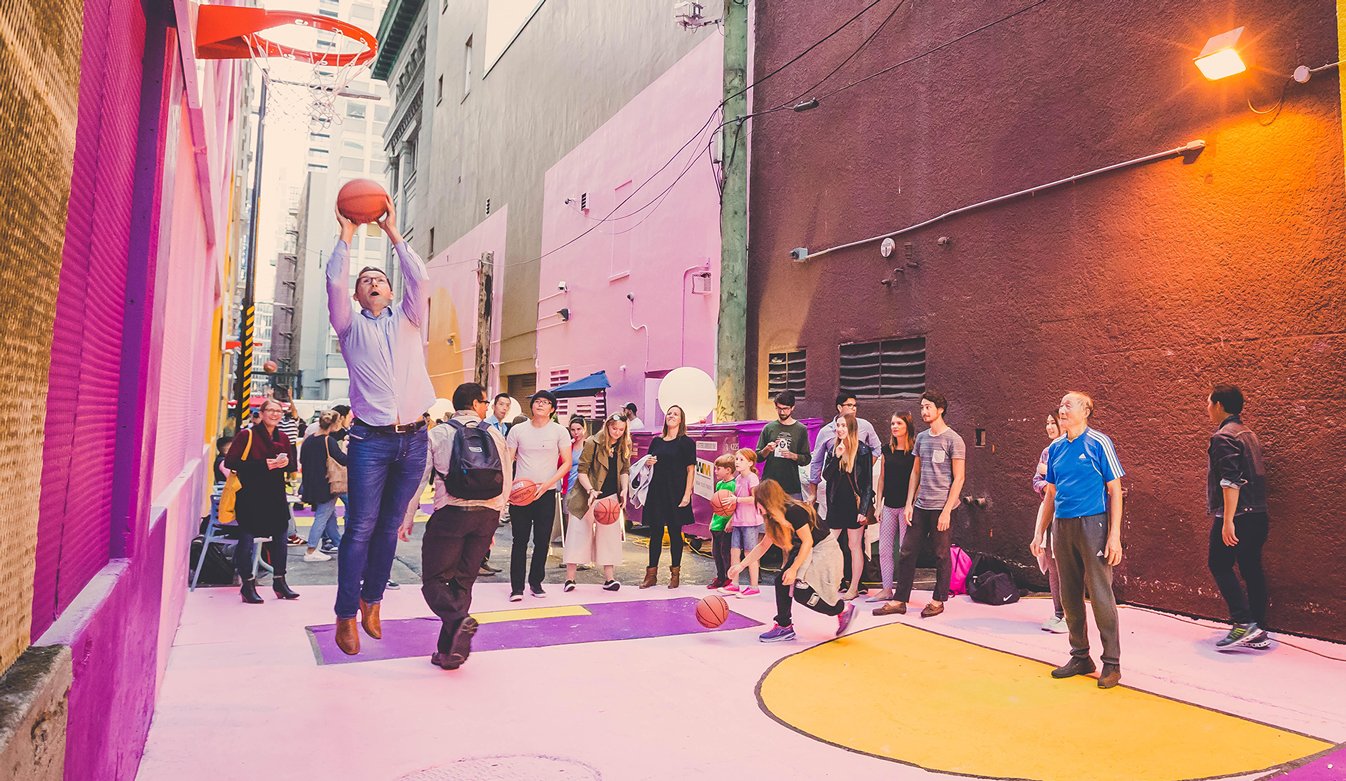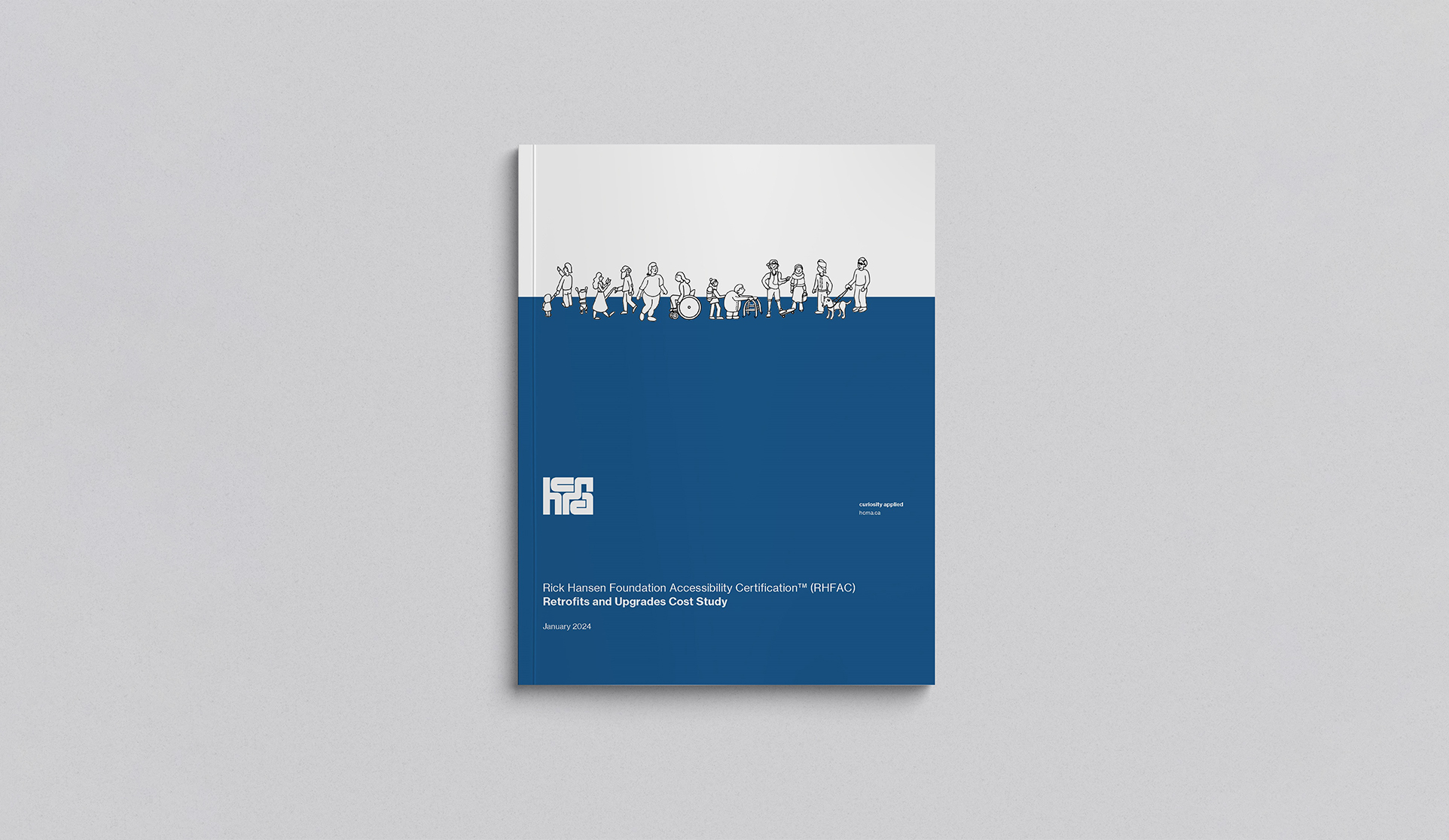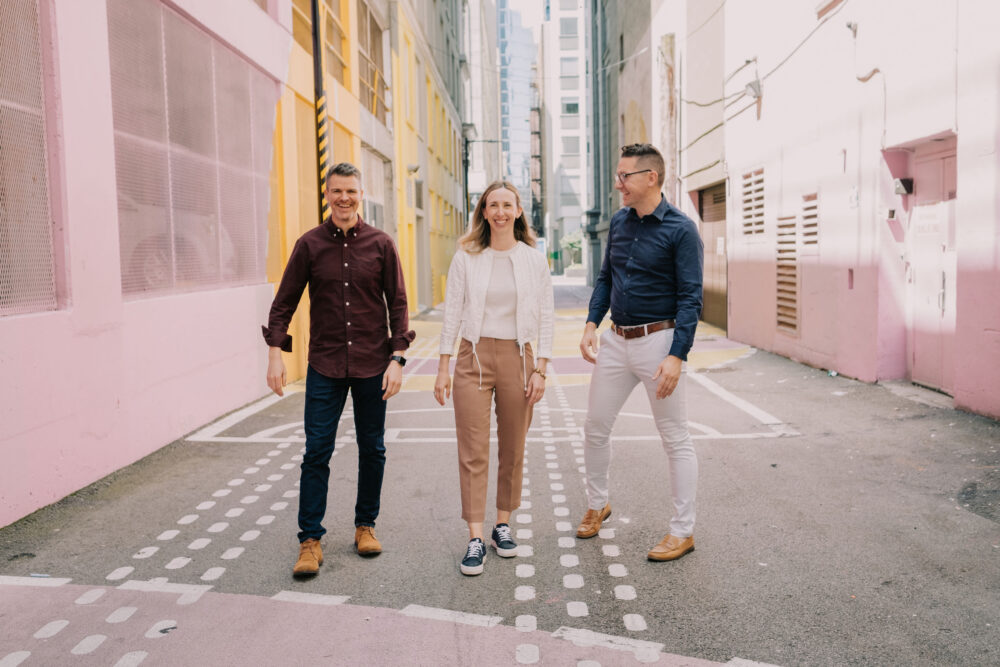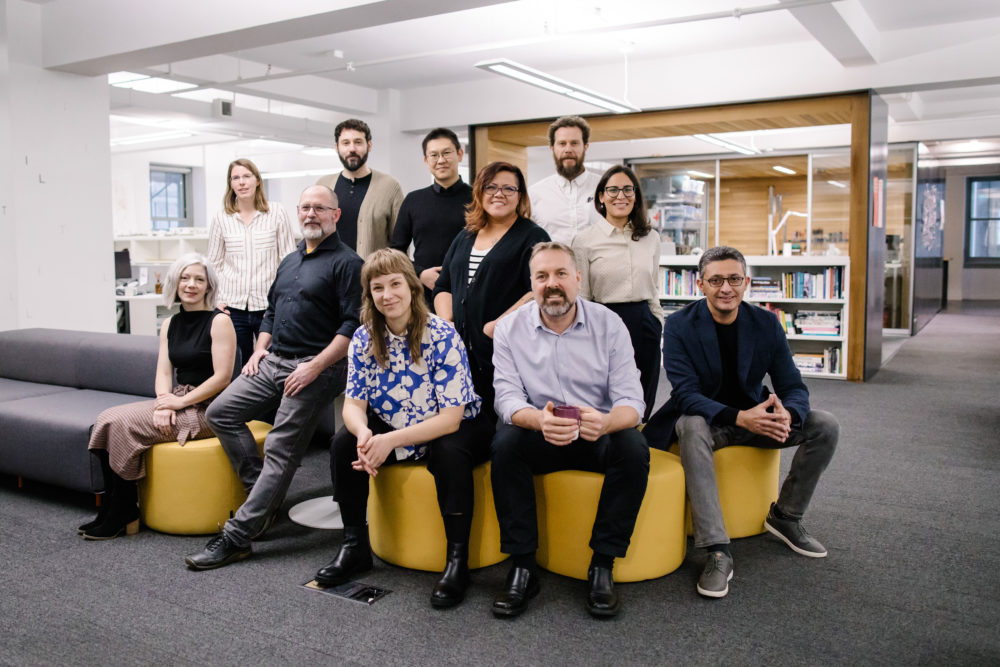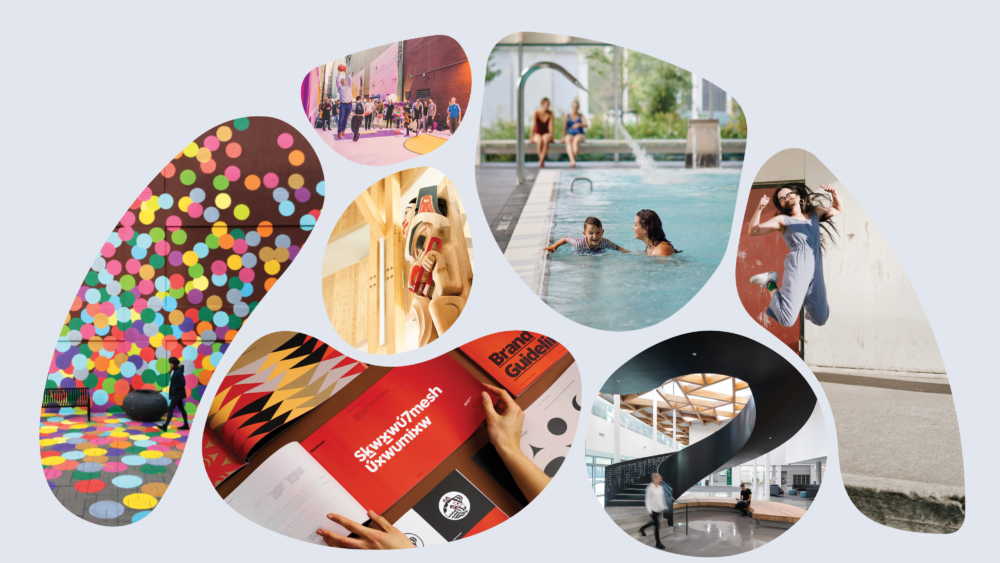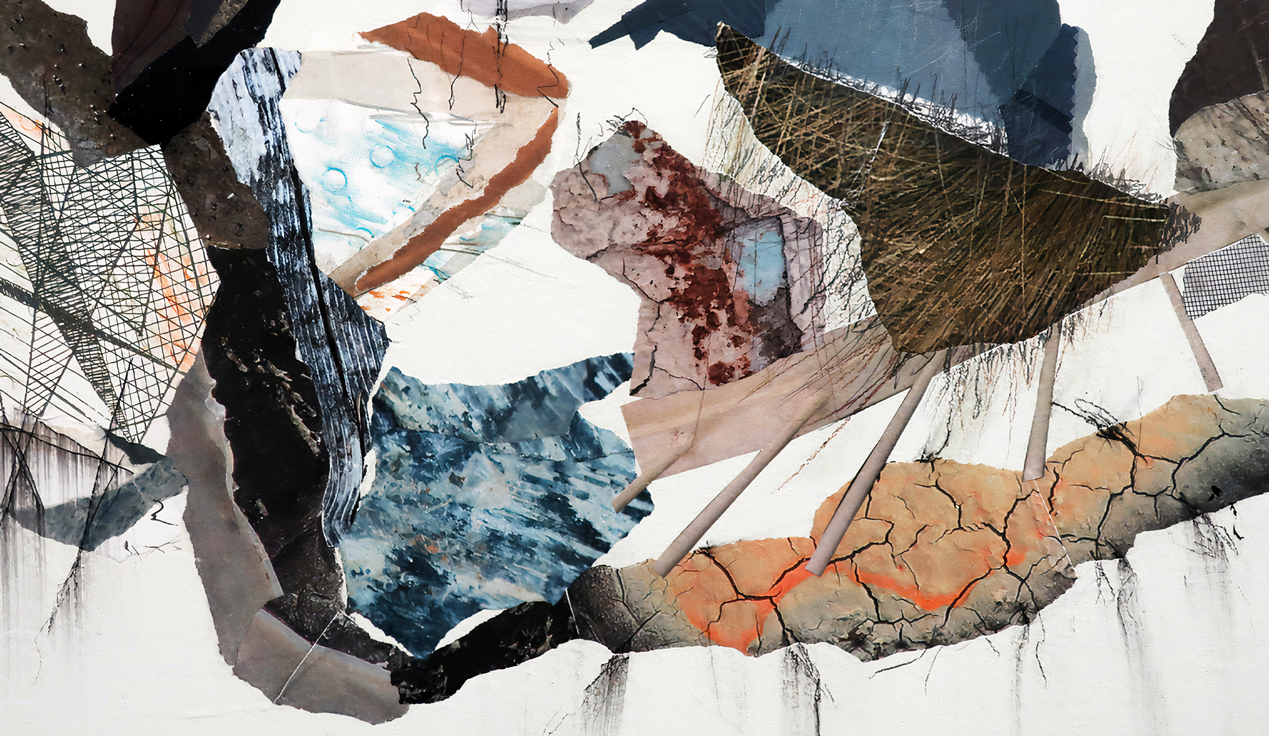
The first of its kind, ‘Topographies of Care’ is a three-part project by Vancouver-based interdisciplinary artist Shirley Wiebe. Through her residency, Shirley explores the theme of connection during a time of disconnection – the isolation brought on by the global pandemic.
Over the course of the last year, Shirley welcomed us into her world, sharing her techniques, facilitating workshops, and inviting us to collaborate within her artistic process. In an unforeseen way, these sessions with Shirley helped our offices connect during quarantine and remote work. We shared ideas, chatted, and caught-up via Zoom during our otherwise isolated days.
By using printed images, paint, and pencil, Shirley created a trio of murals that explore the common threads that unite our offices and the communities they serve. Each installment explores an elemental material or force; in Vancouver, metal; in Victoria, water; and in Edmonton, earth.
A daily reminder in our offices of our commitment to designing buildings, brands, and shared experiences to connect people.
Artist Statement
How would I collaborate with three offices at a distance to portray their collective qualities? My response was to ask each person to contribute sketches, schematics, writing, or photography. The printed submissions reflected their shared range of passions and ideas. These would serve as witness marks, the raw materials to inform my final work. Through a process of collage, featuring pencil and paint markings, the paper fragments were transformed in coming together in a series of new wholes.
The completed project evolved into three intricate paper filigree installations uniquely integrated into the architectural features of each office space. With the paper pasted directly onto the wall as a second skin, the fragility of its material nature took on the inherent strength of the office architecture, merging and becoming one with it.
Each work is unique to its particular office setting and geographic location. While the colour palette shifts to suit the chosen elemental, a cohesiveness emerges given the similar technique advancing each installation—a visual language in which each fragment serves the full statement; in which each is a clue essential to the bigger puzzle.
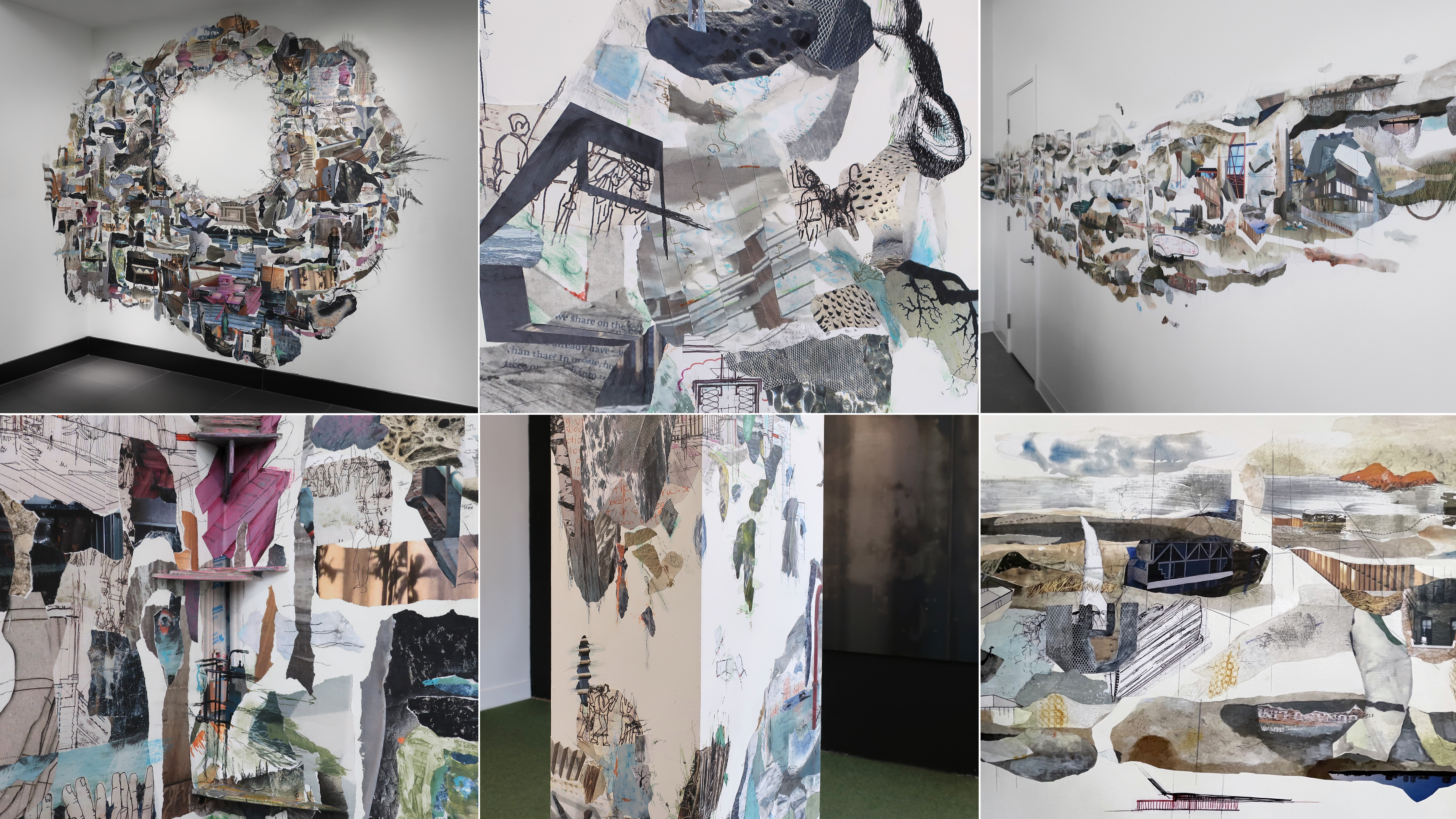
Project Journal Notes
My hcma residency began in Fall 2020, promising to be a unique opportunity to interact with their three offices and explore commonalities. Originally scheduled as a twelve-week session, our time frame eventually extended to one year. A second and third wave of the pandemic continued to create uncertainty at every turn.
My impressions for developing a project usually come about through physical, proximity, exploration and happenstance. A vision for the final shape of things follows research, rather than the opposite, where pre-conceived vision would dictate the process. As such, I needed to adapt to the Zoom format, which became our primary means of collaboration. I relied on the visual submissions that team members contributed as a way to delve deeper into the process. Beginning with small experimental collages, I juxtaposed images and textures from related building materials with my own drawings. I presented these samples for my first proposal, beginning to trust that the visual language was speaking to stories of connection.
Installation work is a concentrated physical gesture, akin to the building process; ladder, tools, and materials are typically all spread out. For me, however, the blueprint reveals itself through the action of making, with each choice or decision leading to the next.
I developed the final work on-site over two weeks of the holiday season. Family gatherings and travel had been prohibited due to public health guidelines. I passed by twinkling lights and colourful displays on my walks back and forth through quiet downtown streets.
Time disappeared; daylight turned to darkness through the window beside me. I worked alone in the alcove space that had been selected for my installation. A video was being produced in the larger office space and I was privileged to overhear the narration of a new book, ‘How to Create Community Buildings with Impact’ – a live podcast that guided my hands and movements, immersing me in a significant moment of creation, a moment about creation itself.
Vancouver Install: December 2020
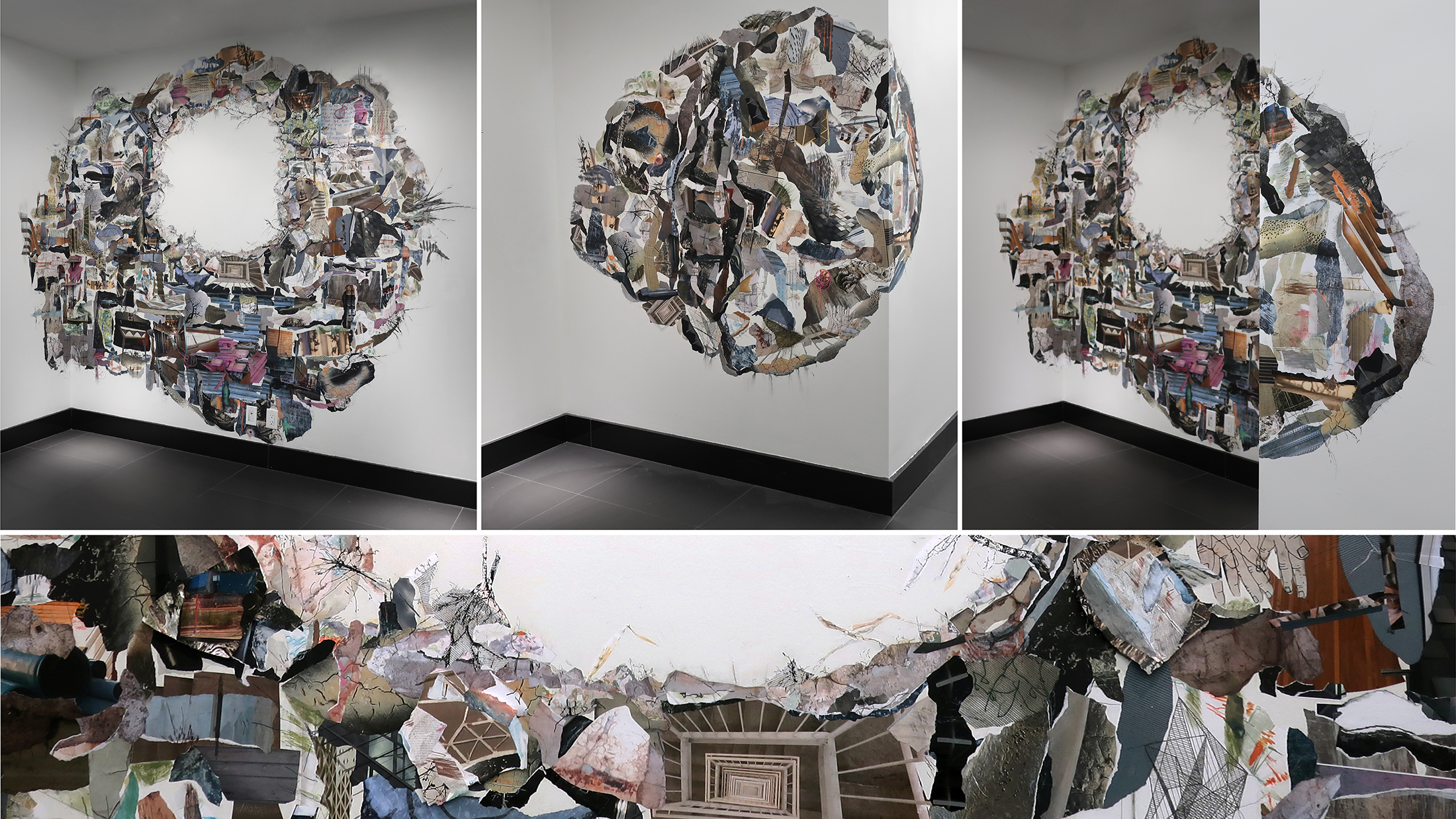
alchemy of ideas.
Victoria Install: July 2021
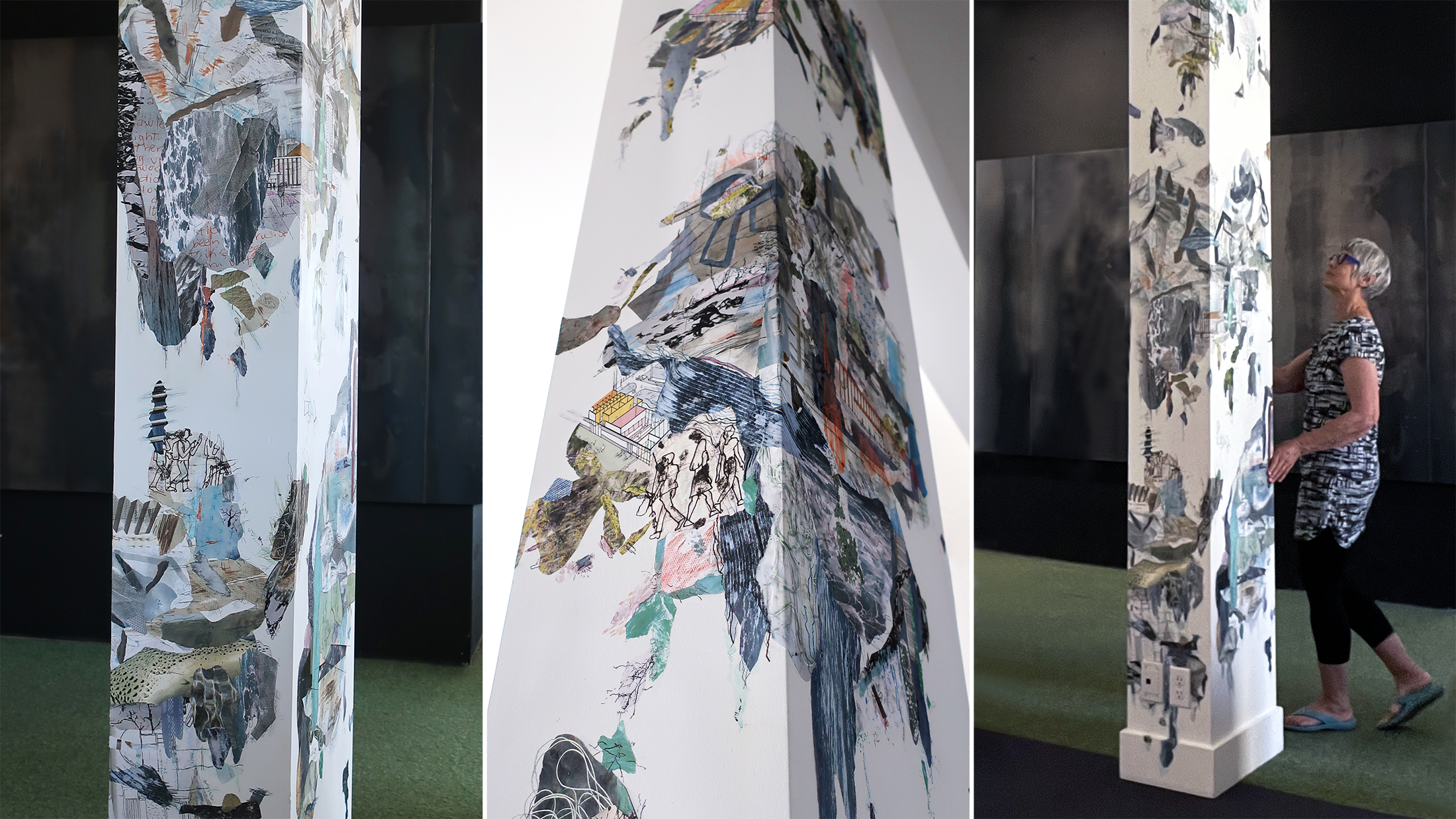
I adapted and simplified the series’ developing concept for Victoria’s installation, as pandemic restrictions continued to prevent non-essential travel between the mainland and Vancouver Island. We chose a freestanding column as the site for the piece. Collaged segments, created in my Vancouver studio this time, were sent to Victoria with a small-scale model, diagram, and tutorial video. Three Victoria team members collaborated to install the basic collage forms with my virtual supervision.
A completely unique experience for all of us. One month later, I could travel and was able to add the final layer of images, drawing, and painting. By that time, several people were back at the office again, and fortunately, we could work side by side, guided in a parallel process. We had casual passing conversations. Once the norm but no longer, these interactions were newly poignant.
Edmonton Install: August 2021
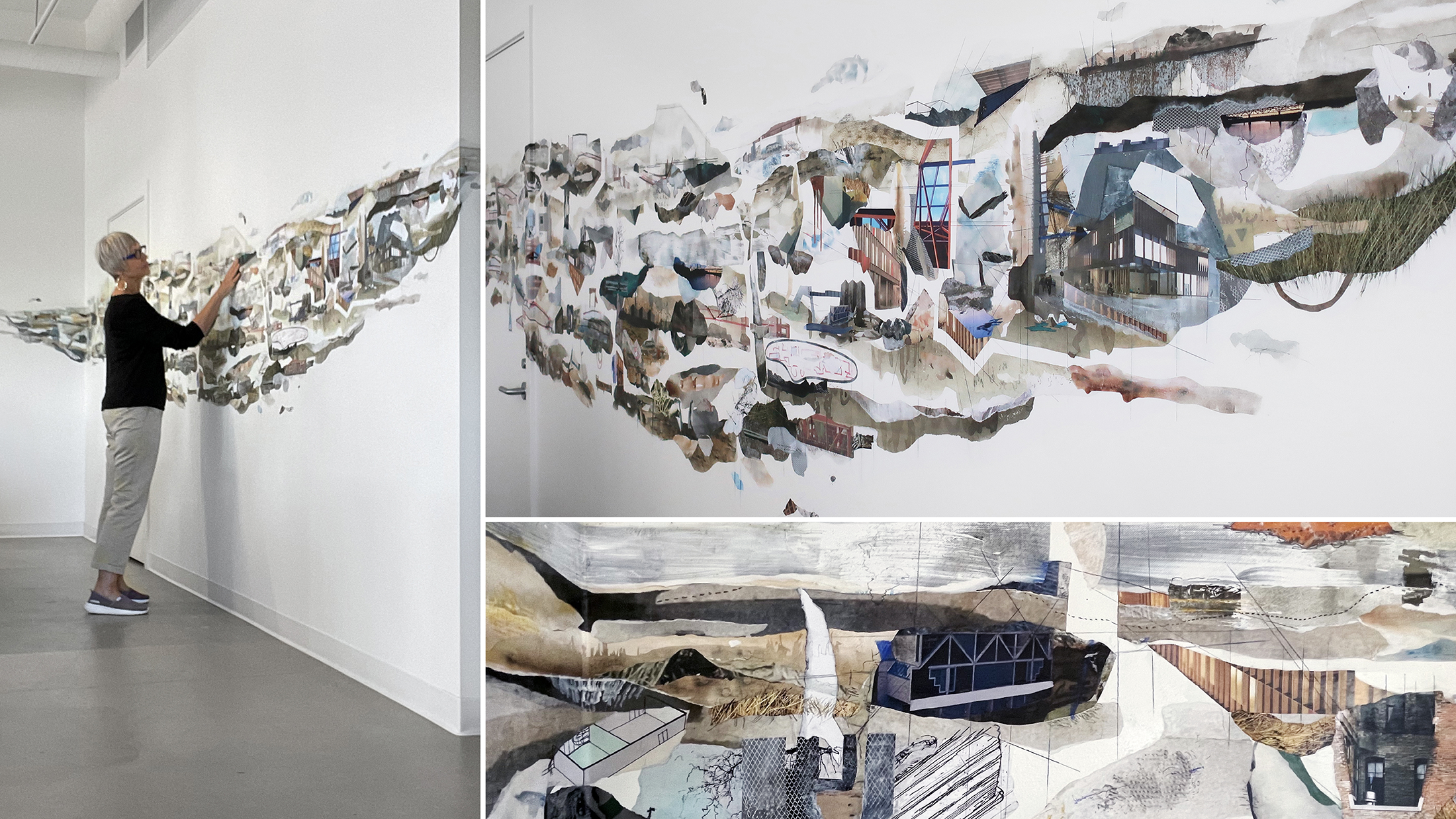
and renewal.
Our collaborative discussions had been ongoing since late fall when the Edmonton office was just newly opened. Within the pristine white space, we eventually chose a long entrance wall for the installation. I envisioned the collage as a sweeping horizontal landscape and created a small-scale model for their consideration. Again, the basic form was created in my studio. By August, BC’s Interior was the site of numerous spreading wildfires, underlining the growing climate crisis.
With short notice on highway blockages, I travelled to Edmonton by air with the rolled-up collage. A few people had recently returned to the Edmonton office and we were able to work together in the open space. They had a clear view as the work developed and I listened in on creative deliberations for building projects. One team member commented on how the collage occupied space in their peripheral vision when seated at their work station, which pleased me. Its impact was being felt. A few weeks later, the fourth wave again shut down work at the office.
Epilogue
The completed three-fold project gave me a sense of true fulfillment. It required everyone’s adaptability and patience, as well as creative ingenuity and perseverance. We endured three waves of a challenging public health crisis—together—and strangely it afforded us a unique opportunity for extended, adaptive interaction and connection. It was a cumulative learning process during which each completed phase informed the next.
For a behind-the-scenes look into Shirley’s residency, follow her on Instagram and check out her website.
Interested in becoming our new Artist in Residence?
Join our mailing list to be notified first.
